School’s in for shear hard work
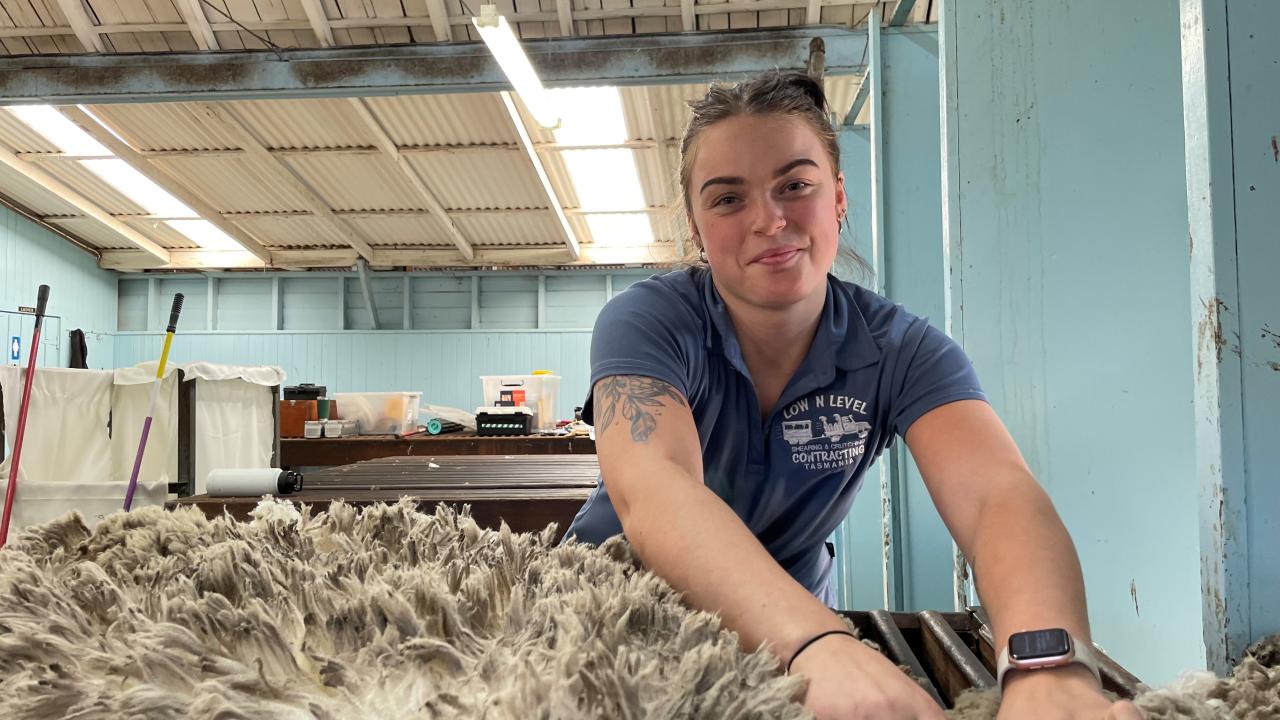
Young shearers toiled on the boards at historic sheep property Beaufront, Ross, last week determined to break into an industry that will literally take them places.
The latest cohort of trainees to go through the shearing school all recognise that they are suited to physical work, they enjoy the action and camaraderie of the shearing shed and they will have the opportunity to travel the state or the whole country if desired – and make good coin in the process.
Australian Wool Innovation (AWI) and State Government funding means students only have to outlay $100 a week to pay for their food and two weeks later they are able to competently shear sheep.
One of the experienced shearers assisting Wool Harvesting and Training Advisory Group trainers was 25-year-old Sam Byers of Ross, who has been shearing full time for seven years.
Sam grew up in shearing sheds on properties at Oatlands and Bagdad – his grandfather, father and brother are all shearers.
Working for various contractors around the state, he is in high demand due to his speed and precision and has the luxury of choosing to work locally or head off to the mainland when he “wants to have a look around”.
He aims to hit the magic 200 mark each day, but he has a best tally of shearing 504 lambs in a day and can shear 300-400 sheep consistently, which means bringing in around a thousand dollars a day.
The average shearer across Australia shears around 120 per day and the going rate is $4.38 per sheep.
“It all depends on the sheep of course, some are harder to handle than others – but the aim is to be efficient and get the job done properly,” he said.
“The money is good but you’re only paid for what you’re doing, there’s no holiday or sick pay for instance, but that’s what I like – you get rewarded for what you do and how much you put into it.
“It might not be a forever job but it will help set myself up for later in life.”
For property owners Julian and Anna von Bibra, it’s been a rewarding 15 years of hosting one of the shearers’ schools at Beaufront.
The first one came about when there was a shortage of shearers and they didn’t know how they would get their flock shorn.
“I was thinking of sourcing a team from the mainland or even New Zealand, and then I saw an ad in the Tas Country looking for properties to hold a shearing school and I realised this would be the best way – bring more youth into the industry,” Julian said.
Beaufront has the right combination of a large nine-stand shearing shed plus traditional shearers’ quarters, which means they can attract trainees from further afield.
Growing both merino and cross breeds, school attendees can learn their craft on both, starting out with the merinos which require a more complex blow pattern.
By the time they master merinos it’s an easy adjustment to the simpler blow pattern for the cross-breeds – although they are notoriously harder to handle.
“We make sure the trainees are properly fed and looked after – they work hard during the day, they’re physically active and there’s a lot to take in and process,” Anna said.
“By staying here they get to go back and share a meal and conversation with new friends, they unwind, debrief – it’s a very holistic approach to teaching,” Anna said.
“Not only are there more shearers as a result of the schools but it’s very rewarding when years later you come across people in the industry and some of their first moments were at a shearers’ school and you’ve been a part of their journey and you’re seeing them now as a professional embedded in the wool industry - that’s super powerful,” Julian added.
“Our role is relatively minor just providing the facilities and the sheep – it’s a couple of weeks where shearing goes slower but it gets done – you want them trained well for their sake and for the animals’ sake.”
Like many sheep farmers in the district the extended dry period and lack of feed has forced the von Bibras to cut back on stock accordingly and they will be cutting back further as winter approaches.
However, what they retain is top quality, and like every other year their wool handling and shearing team will take next Friday off for Campbell Town Show, to put their skills to the test in the friendly competition of sports shearing.
One of those wool handlers will be Gemma McGuinness from Colebrook who is 18 and following in her sister Hayley and brother Brodie’s footsteps, who both started as roustabouts and then became shearers.
“I like handling the wool, I reckon I’ll stick to rouseabouting for a while and then possibly train to be a wool classer,” she said.
“I’ve always been an active person and it’s such a fast pace – it’s a real challenge to keep up but that’s what I love.”
Fifth generation cattle farmer, 17-year-old Jordan Hingston of Gawler, hails from two family farms owned by his father Damian and grandfather Des Hingston, Cliston and Oldbury.
While their expertise is breeding simmental cattle and Jordan started his own simmental stud last year, he decided he wanted to be a shearer like his great-great grandfather.
“I wanted to add to the skill set on the farm and shear our small flock of Poll Dorsets,” he said.
“So far I’ve learned how to shear properly and techniques to improve and get quicker, go over the gear, handpiece setup, grinding, positioning and overall attitude,” he said.
After four months of solid shearing he reckons there’s no turning back.
“It’s even more enjoyable than what I thought it would be and as it gets easier and you shear more sheep and its awesome.”
Shearing Contract Association of Australia shearing and wool handler instructor and AWI wool classer Mathew Haney takes trainees from beginners to competent shearers.
At 55, Mathew, from Bothwell, is proof that there is longevity in shearing.
He has a run that includes working for Bothwell farmers Will Bignall at Thorpe and Duncan Campbell at Rothermay and Hamilton farmer Chris Downey at Nareen - and he can still shear 200 in a day.
“Today’s young shearer looks after their body, they don’t go to the pub every night – they’re an athlete and they can use a harness to make it even easier on their back,” he said.
“There’s a lot more women taking it up these days too and they hold their own – it proves that its more important to be physically fit than strong – having said that they build up enormous strength. Some of the sheep are up to 100kg,” he said.
AWI consultant Lachlan West met with stakeholders and Primary Industries and Water minister Jane Howlett at the shearing school and reiterated that the partnership with industry and the government was all-important to the delivery of four entry-level novice courses and at least two improver courses each year plus extra days of on-demand training as needed.
“Harvesting wool is a key component of a farmer’s supply chain and we need to continue to train a reliable workforce for the future,” Lachlan said.
Two-hour wool harvesting animal welfare courses are also being run throughout Tasmania this week.
“We’re very proud of how everyone is working together to make the shearing schools happen and obviously we want to keep investing in it and attracting people into the industry,” Ms Howlett said.

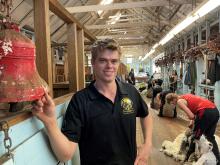
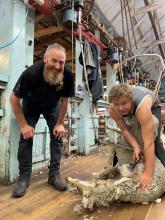
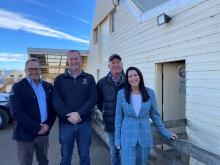
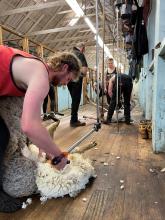
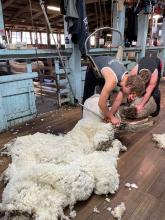
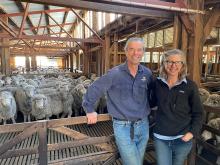
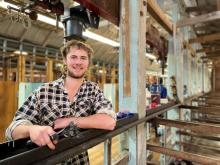
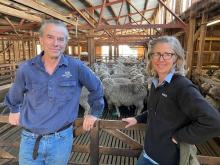
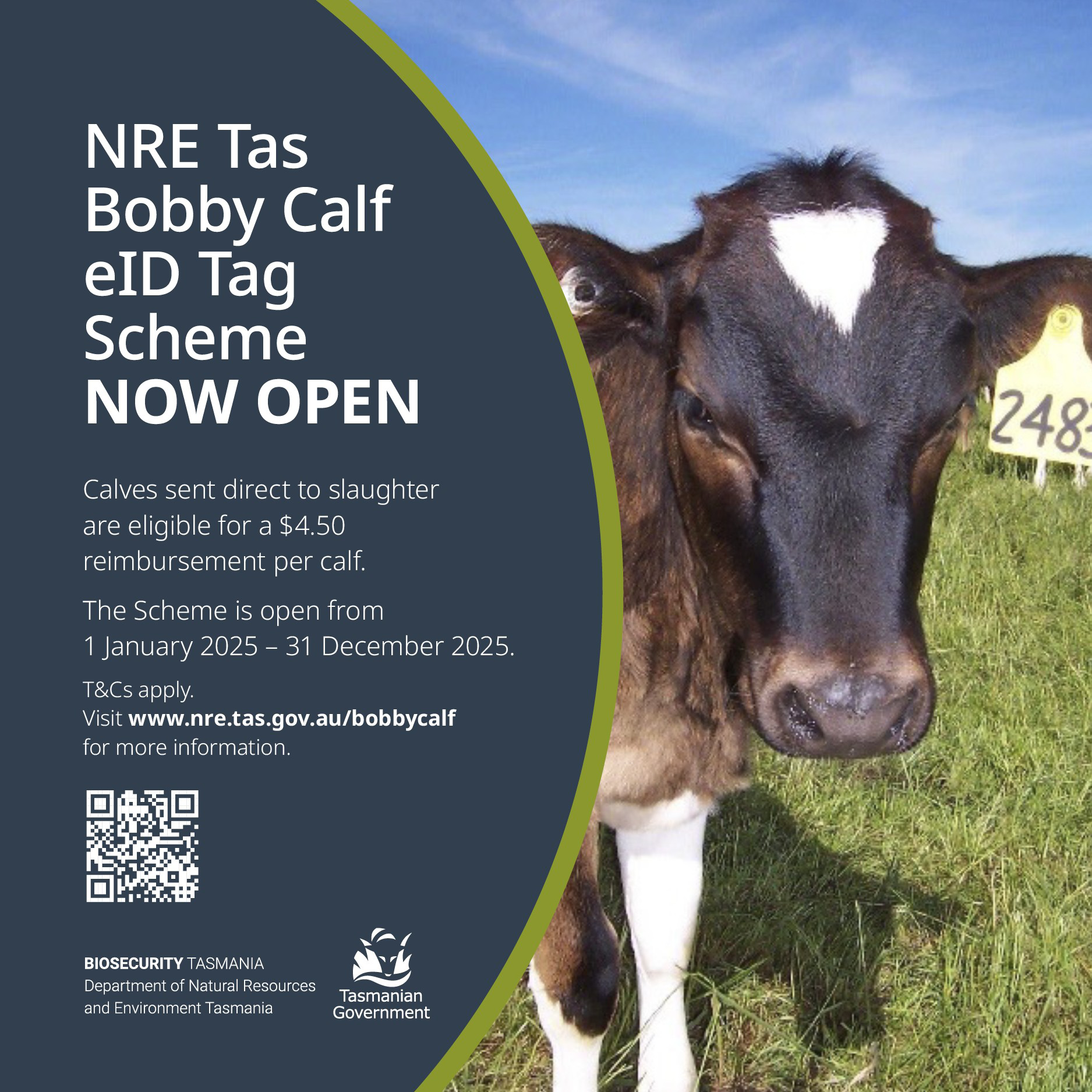


Add new comment